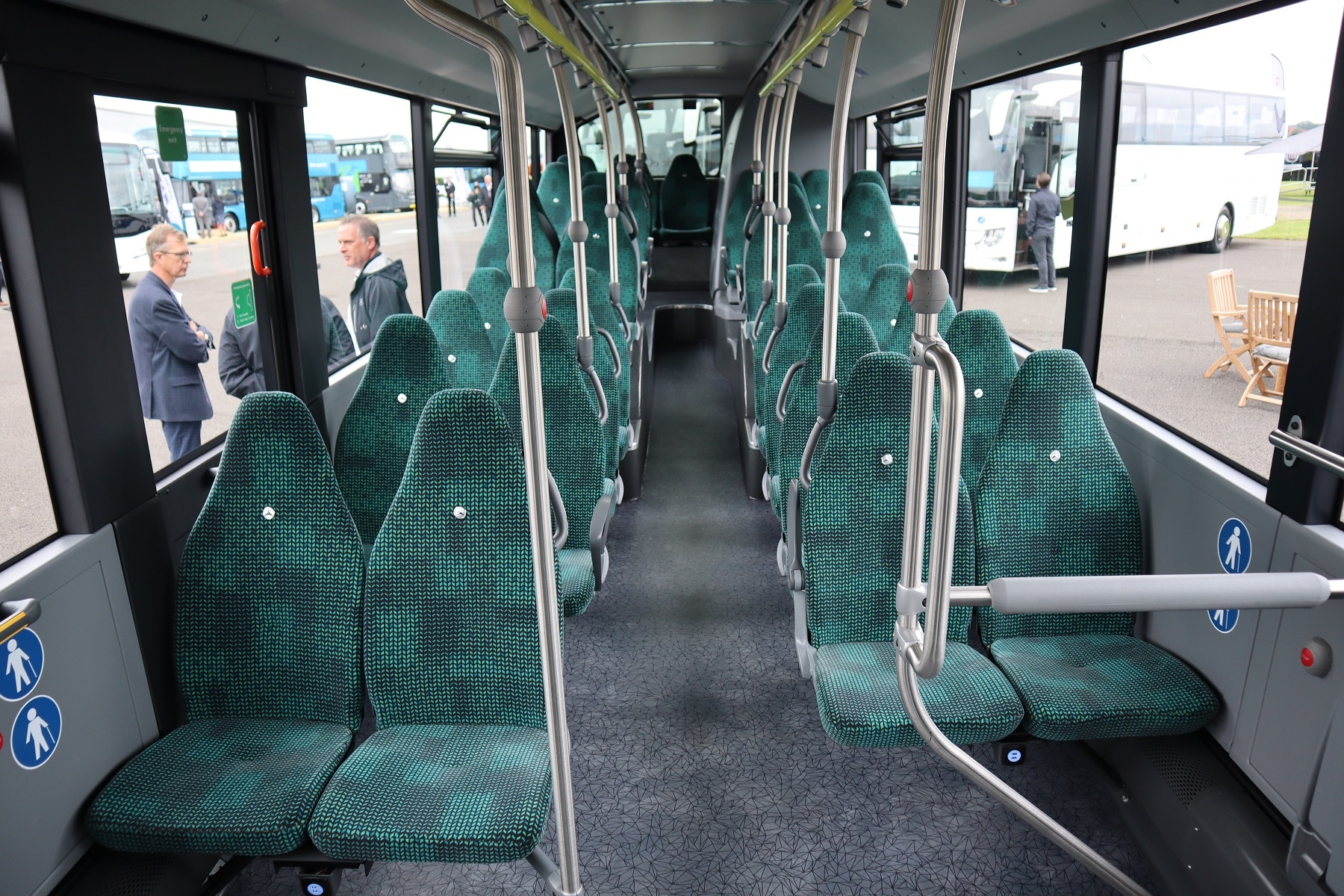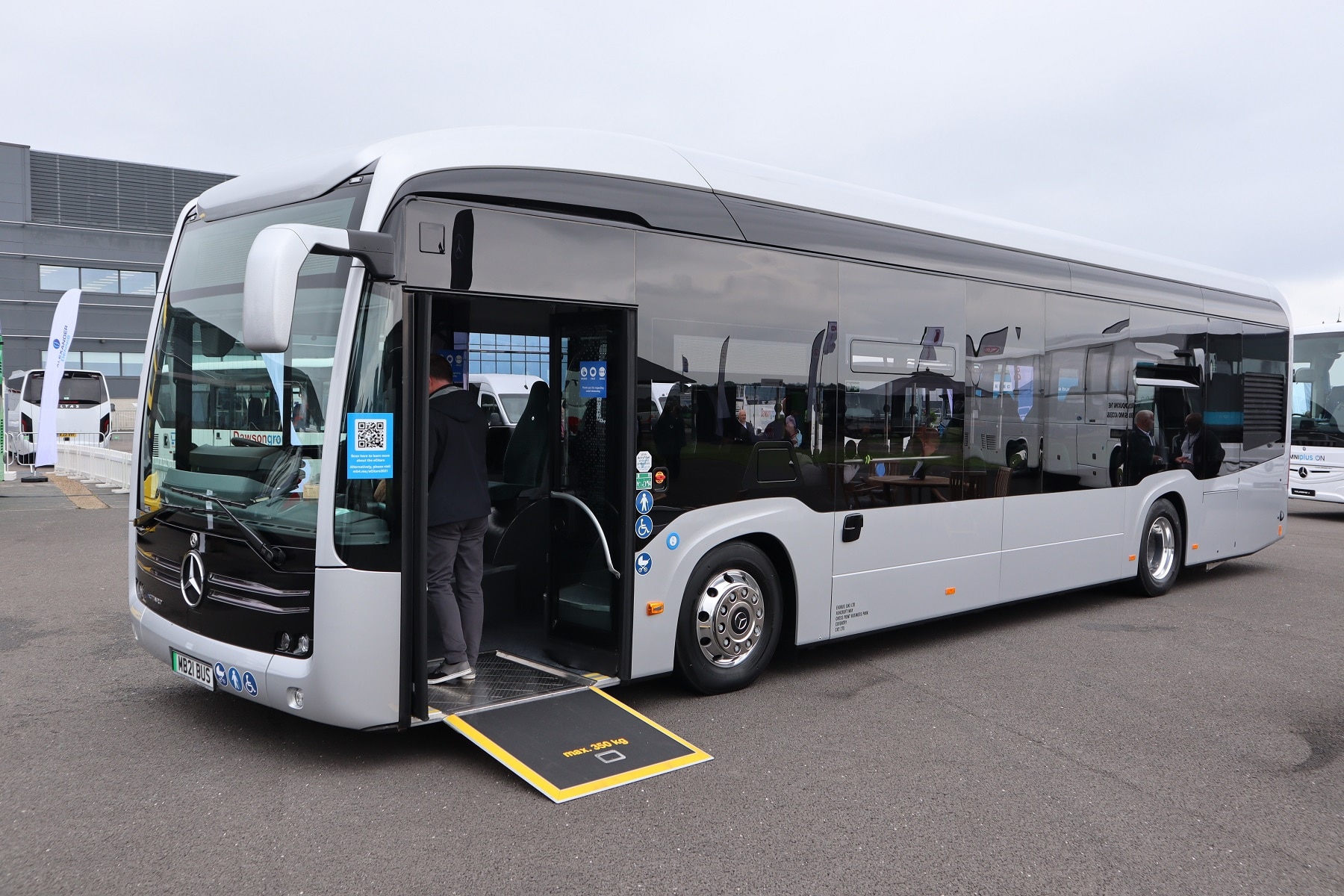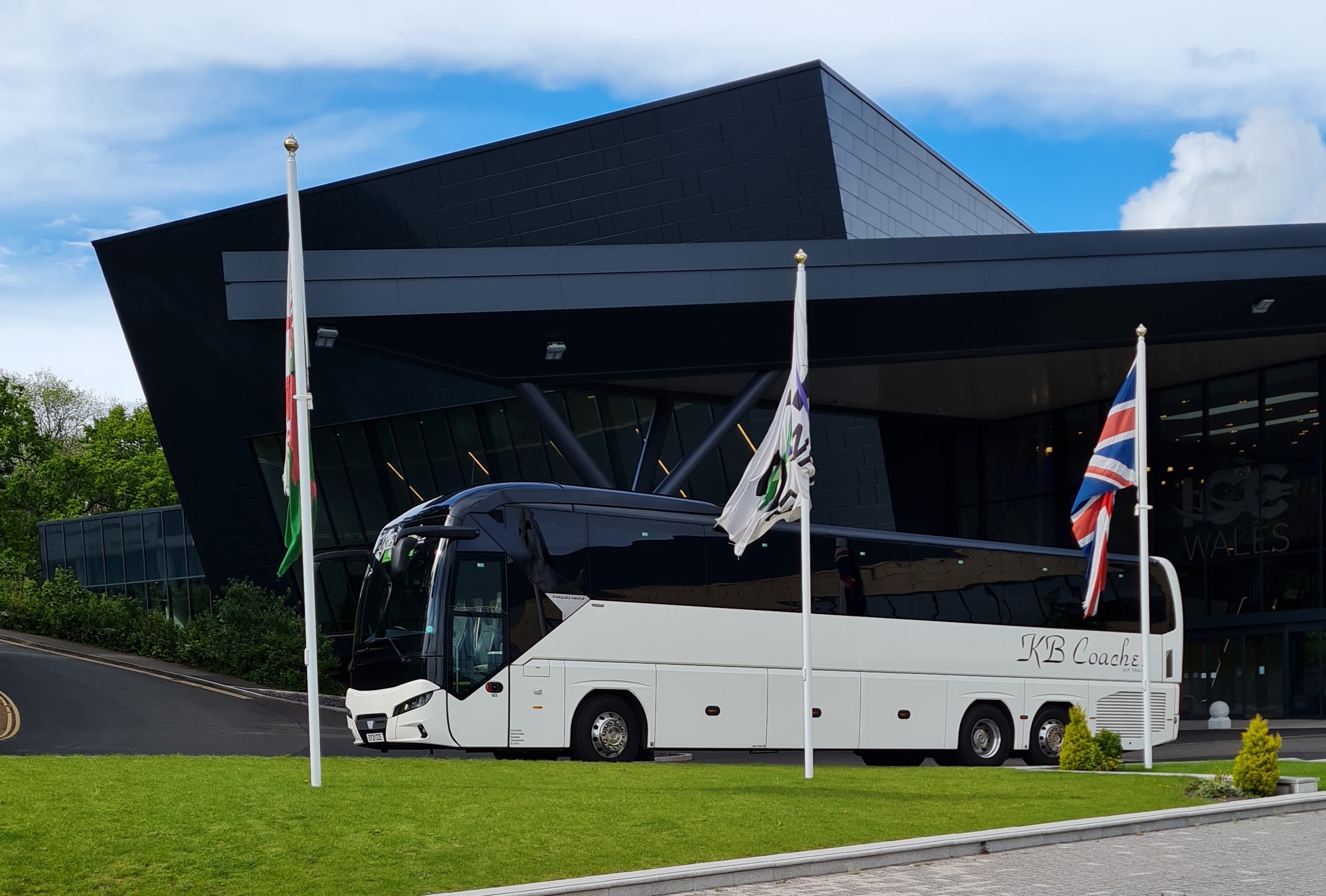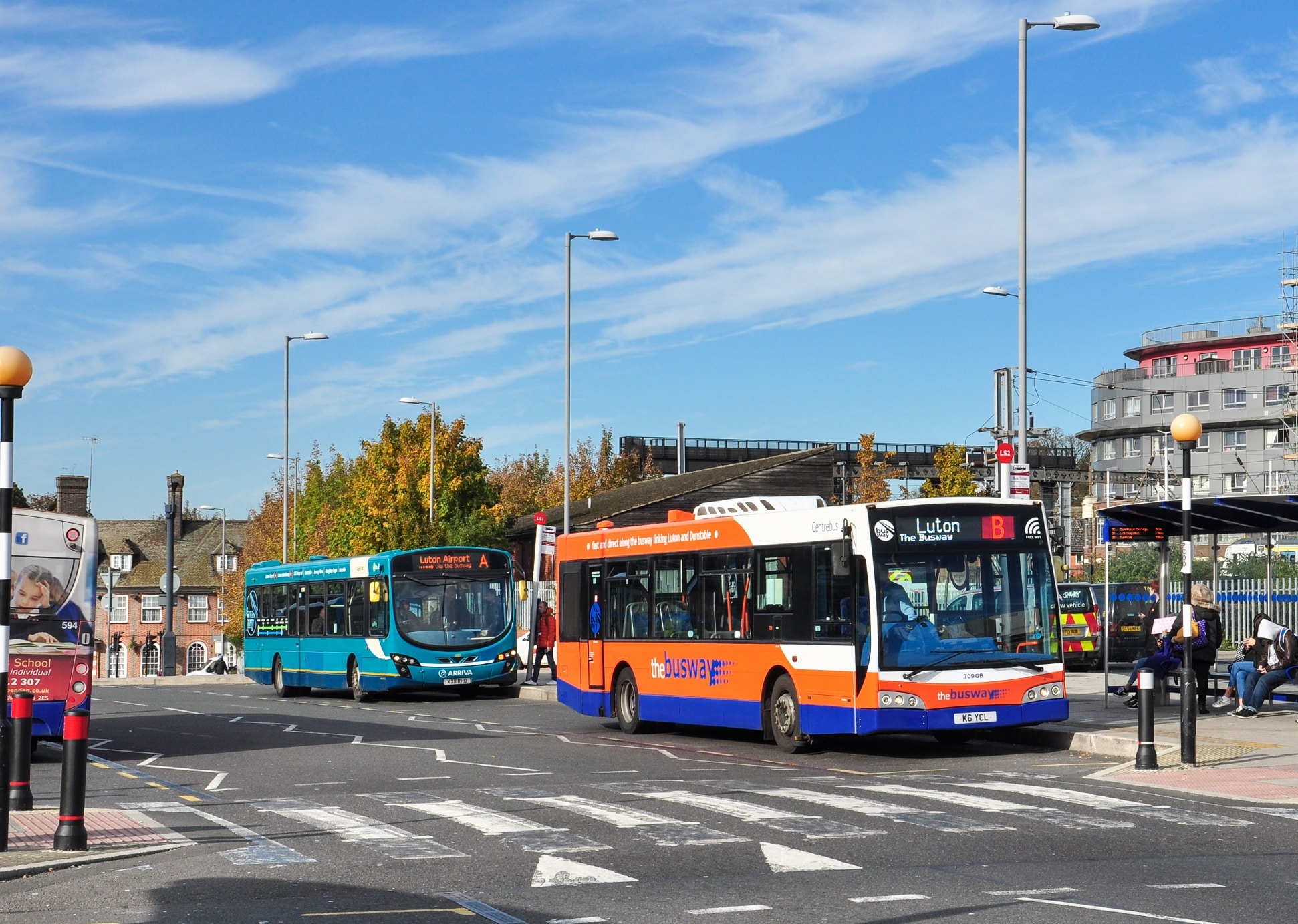Further growth has come to the battery-electric single-decker bus market in the UK and Ireland with the long-anticipated arrival of the Mercedes-Benz eCitaro. It debuted at ITT Hub on 30 June.
The eCitaro had its global reveal in 2018. Daimler Buses promised much at that time. The newcomer to right-hand drive is an impressive premium product and – like its peers – the model has benefitted from a great deal of attention at the design stage to maximise energy efficiency.
While the eCitaro may look different to its diesel sisters from the front, the interior is to a largely common layout. One focus has been on ensuring that it drives in the same manner to a Citaro – an unusual take, but those efforts have been successful and they will be useful in fleets that ultimately operate both models.
Plug-in complemented by opportunity option
EvoBus (UK) will be able to deliver production eCitaros in Q1 2022. They will differ to its demonstrator in one significant way: Energy capacity. The initial bus has 12 first generation NMC batteries, which give 292kW/h of storage. Subsequent examples will have the second iteration, delivering a maximum of 396kW/h. A seven-piece solid-state option has 441kW/h.
Range predictions are in line with those increments. Daimler Buses says that second generation NMC-equipped buses will be capable of 200km between charges under winter conditions, and up to 270km otherwise; solid state technology will deliver 230km and 320km respectively. Those figures are based on a testing regime that has extended from Finland to Spain.

While optional pantograph-based opportunity charging complements the plug-in CCS2 connection, the UK dealership believes that as range increases, it will become less relevant to the market.
Even so, pantograph charging can be carried out at 300kW, and Daimler Buses is looking to increase that to 450kW.
Batteries can be upgraded in later life, albeit within a restriction of using the same chemistry that the bus was built with. That ability was a key element of the eCitaro design brief, says EvoBus (UK) CEO and Managing Director Michael Thielmann.
Energy storage is split over two locations. Four batteries are at the rear nearside and the remainder are on the roof. As a result, the eCitaro retains the range’s ‘shower cubicle’ at the back, but the next generation of the platform will see it disappear. Hub motors – each of 125kW output – are part of the ZF AV 130 drive axle, meaning that the gangway is flat throughout.
Clever climate control part of the package
An element of the energy efficiency optimisation has focused on the climate control system. It uses a heat pump and is integrated with the water-cooled batteries.
One of the keys to that is how the saloon temperature calculation is based on a difference to that outside, and not a pre-set value. EvoBus (UK) says that such an approach considers that passengers dress to suit the ambient conditions.
Additionally, via its air suspension the bus can make an accurate estimation of the number of people aboard. That data is factored into the performance of the climate control. Heating is via perimeter radiators. Such a specification is because not all kinetic energy can be regenerated. Some is thus consumed when appropriate by a resistance unit and used to warm water that is then circulated.
Safety plays a big part of eCitaro
The UK demonstrator has Sideguard Assist and Preventive Brake Assist. The former uses radar to monitor the nearside of the bus “throughout its full length and beyond,” says the builder. The latter is an active brake assistance programme that warns of collisions with pedestrians or vehicles. It will part-apply the brakes when contact is imminent if the driver does not act first.

Sideguard Assist initially highlights to the driver using LEDs on the A-pillar that an obstacle has been detected.
A warning follows if a manoeuvre is continued or initiated that could lead to a collision. The driver’s seat vibrates at that point.
Preventive Brake Assist is a cousin of the Active Brake Assist system fitted to Mercedes-Benz coaches and HGVs. In addition to first warning the driver of a potential forward collision, it automatically makes a maximum 40% brake application if one is imminent. That reduced braking force compared to Active Brake Assist is because of the potential for standing passengers on a bus.
eCitaro: Typically Mercedes-Benz on the road
routeone was able to briefly drive the eCitaro at ITT Hub, having driven a left-hand drive example in 2018. Sound levels aside, it displays many similarities with a Citaro. Acceleration is electronically limited to match that of the diesel bus, and an indication of the amount of energy being either drawn from the batteries or recaptured is given by a large dash dial.
Unlike some other battery-electric models, regeneration does not begin when the accelerator is released. As a result, the bus will coast freely. When cornering, the battery mass on the roof is noticeable, but the eCitaro is most pleasant to drive.
Michael says that Daimler Buses recognises the need for a competitive purchase price for the eCitaro. The first example in right-hand drive shows that it is a fine product – and it will, undoubtedly, get even better.



























